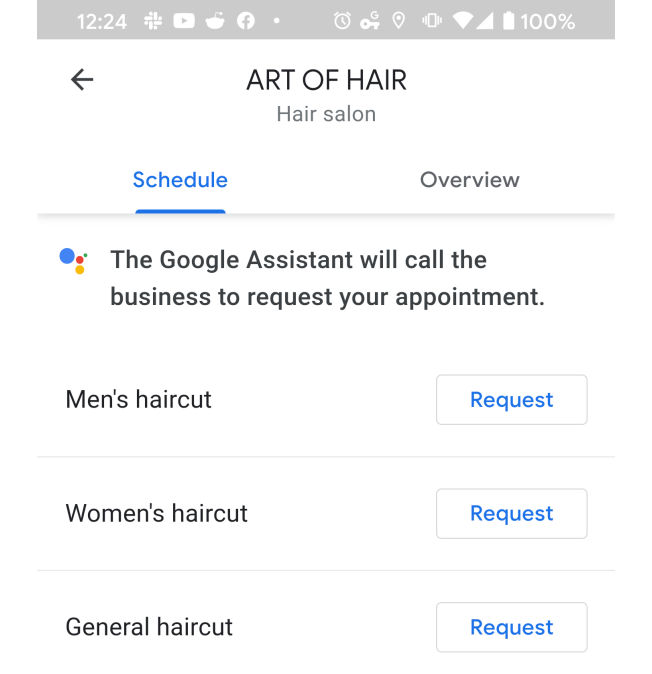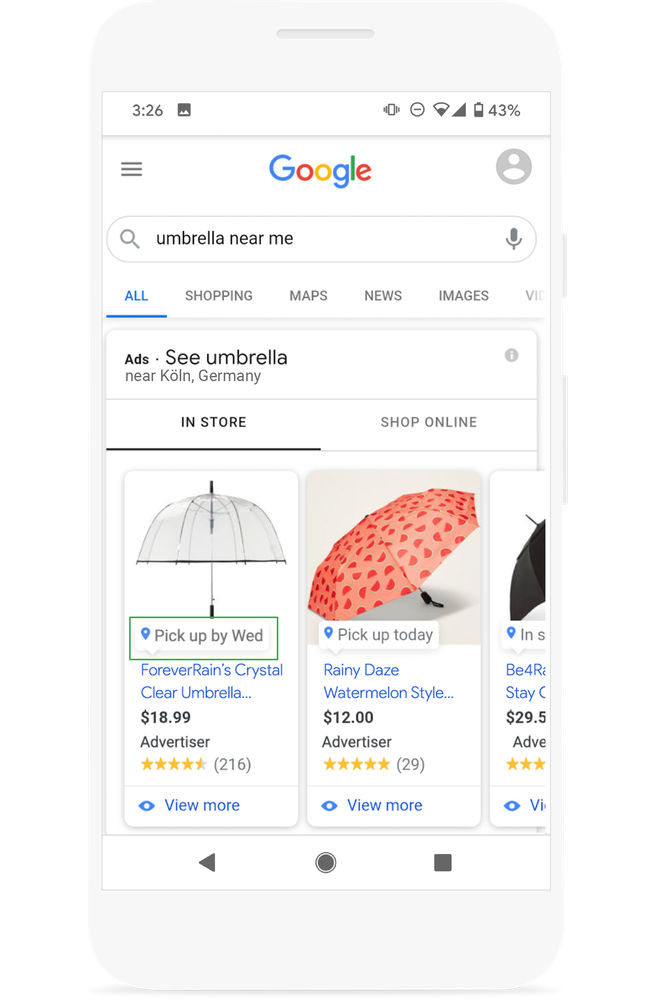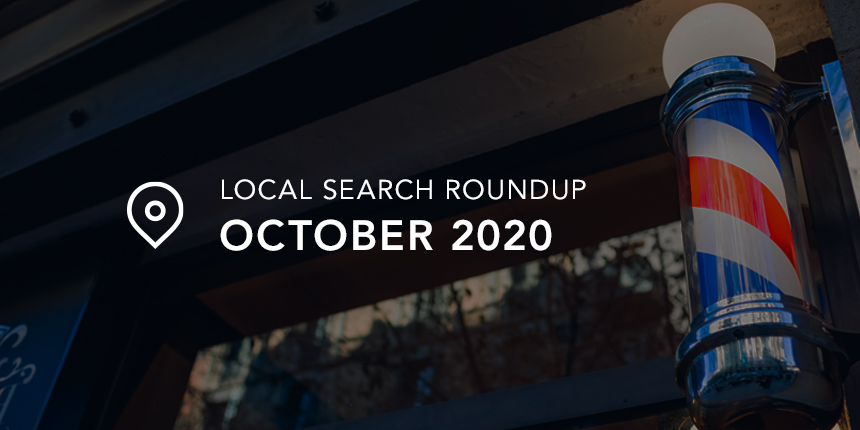This month in local search, Google made great strides in call histories, review solicitation, and… haircuts? Let’s cut straight to the chase and break down exactly what you need to know about the latest updates in an industry that changes faster than any other.
A new “Call History” feature for Google My Business
Starting with their largest market first, the US, Google is testing a new “Call History” feature for Google My Business (GMB). Customers who contact a business via Google Search or Maps will now have their call history documented by Google. More importantly, information about callers will be accessible to business owners via a new “Calls” tab in GMB. Call data is stored for up to 45 days, but is currently only accessible on the GMB mobile app.
Call data like this normally requires tracking numbers, but business owners do not need to generate any special numbers or make other arrangements to enable this new GMB feature. When users click the call button, Google itself will create a unique forwarding number to enable tracking on the business owner’s behalf. The beta is made as seamless as possible for business owners to increase adoption and allow Google to properly test the new feature.
Google Duplex goes live for hair appointments
Google unveiled its Duplex AI technology in 2018, showing how it could impressively handle phone bookings using a natural-sounding voice. The feature was billed as being able to handle doctor appointments, venue reservations, and restaurant bookings. To date, Google Duplex has only been utilised for restaurant bookings and to confirm business hours on Google Maps, but Google is now taking steps to allow much broader consumer use of this feature—starting with hair appointments.

Image: VentureBeat
Functionality remains much the same as it is for restaurants, although there are several more challenges to overcome. For instance, salons and barber shops do not have the same rigid structure—or established online norms—for appointment bookings. In this latest test, Duplex now seems able to handle the questions the customer would usually need to answer themselves, such as the name of their preferred stylist. Of course, it can already handle the routine task of choosing a date and time on behalf of the customer.
Although Google and other tech giants have pushed voice search in recent years, the explosive advancement of voice search devices like Google Home and Amazon Alexa has stalled. With sales stagnating, the industry now has a renewed focus on the hurdles voice search assistants are presently unable to overcome—and they’re beginning to appreciate just how difficult these obstacles are. Google always insisted that Duplex could handle bookings, but the advancement of voice search assistants has nevertheless gone off the boil… for now.
Google Shopping goes free worldwide, adds “Pickup Later”, and emphasises attributes
Google continues its efforts to develop into the shopping platform by adding new features and giving businesses more free visibility. As of mid-October, Google Shopping is free not only in the US but worldwide. Per Google:
Just as we don’t charge sites to be part of the Google Search index, listings for participating retailers are eligible to appear in these results at no cost to them.
These free organic product carousel listings are not replacing paid ads—paid ad placements are still available to those that want an edge in this online marketplace. Basic participation, however, has been made free worldwide to include a more robust consumer shopping experience.
A “pickup later” action has also been included in the Google Shopping tab, which allows users to purchase products for a later date. For businesses, that means the ability to promote items before they’re in stock, accept preorders, and even adjust the size of their initial order depending on online consumer demand. This feature also helps to bridge the gap between online and offline transactions, providing a handy third option on top of online orders and immediate pickups.

Image: Google
Meanwhile, attributes are continuing to transform GMB. Previously only visible on mobile, desktop users will now see business attributes without having to navigate through additional menus. In addition, the “order pickup” button that accompanies the attribute section is now shown prominently to most users. With fewer barriers to completing a transaction, business owners should expect to see value in GMB’s ease-of-use updates.
Google’s ability to tie user searches not only to stores but to its own internal shopping network is unique—and has been continually optimised since its relatively recent launch. If anybody has the potential to topple the ecommerce giant that is Amazon, it’s the other giant on the block.
Google solicits online purchase reviews
Google’s knowledge of users’ search behaviour is being utilised to encourage more reviews. In short, when a Google user searches for a particular product, Google may ask: “Have you made an online purchase from this brand before?”
This feature is the latest step in Google’s march towards becoming a primary review platform, where its user-generated content is not only the main source for business information but for restaurants, destinations, and now products. After taking the fight to Yelp and then Trip Advisor, Google is now further enhancing its shopping experience to compete with (yes, you guessed it) Amazon.
GMB adds more COVID-19 features
As the pandemic set in, restaurants had an urgent need to clearly display their delivery, takeout, and dine-in options. They got the job done with attributes, which have since been used for nearly everything. Their main purpose in 2020, however, remains health and safety information:
- Appointment required
- Mask required
- Staff get temperature checks
- Staff wear masks
- Temperature check required
- Safety dividers at checkout (new)
- Staff required to disinfect surfaces between visits (new)
All businesses should keep up with their attributes, safety-related or otherwise. Missing a handful as they come out may be understandable, but a few months’ worth of missed attributes only hands an advantage to your competitors.
GMB Service Area Businesses and Virtual Offices guidelines updated
With 2020 being the year of digital businesses and working from home, Google has had to update its guidelines for Service Area Businesses and Virtual Offices. The latest updates are as follows:
- Separate office locations once again must be staffed by your business staff.
- Service Area Businesses can have multiple listings if they have different staff in different locations. Per Google: “If you have different locations for your service business, with separate service areas and separate staff at each location, you’re allowed one profile for each location. The boundaries of your profile’s overall service area shouldn’t extend farther than about 2 hours of driving time from where your business is based. For some businesses, larger service areas may be appropriate.”
- Businesses can’t list a virtual office unless that office is staffed during business hours.
- If your business lacks a storefront with clear signage and instead travels to customers at their physical locations, you’re allowed one service area Business Profile. If you’re a Service Area Business, you should hide your business address from customers.
These updates arrive after Google had to verify “Virtual Kitchens”—restaurants that offer no storefront, dine-in, or take-out option, but instead are shared cooking spaces where different businesses can prepare online orders.
Are you staying on top of your brand’s performance, presence, and future-proofing in local search? It’s not always as easy as it seems, but you have an expert team at your disposal. Let’s talk.




